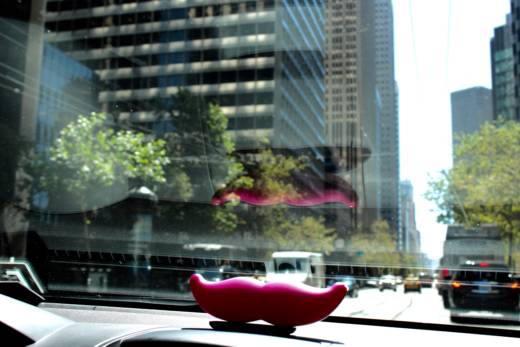"In 2016, San Francisco was rated as having the third worst traffic congestion in the nation," the city's submission says. "Much of the increase San Francisco has experienced in vehicular traffic can be attributed to the huge increase in the number of transportation network company (TNC) vehicles operating on city streets."
So far, however, the evidence that ride services are the main source of worsening congestion is mostly anecdotal. The increased traffic could also be a symptom of a better economy, job growth and the city's construction boom, says Randy Rentschler, a spokesman for the Metropolitan Transportation Commission.
"There's so many factors to traffic," Rentschler said. "Assigning downtown congestion to Uber and Lyft is probably giving them more credit than they deserve and putting more blame on them than they've earned."
Tilly Chang, executive director of the San Francisco County Transportation Authority, says she doesn't doubt the impact ride services are having, but agrees the rise in congestion is probably due to many factors.
"It's one of the hardest questions out there," she said.
A boom in street construction is another consideration, says Chang. The city has been making safety improvements to slow traffic and create better conditions for transit and for people to walk and bike.
"There's more mixed-mode traffic, which is a function of more people wanting to use those modes in a growing city, but it's also a response to policies we have implemented to promote those modes," says Chang. "It's going to add up, where you have a capacity that's finite in terms of road space."
Uber officials say their data don't support the SFMTA's claim that ride services are to blame for rising congestion, but the company won't make statistics public or share them with local agencies because they say trade secrets would be revealed. However, they point out that a typical Uber driver works less than 10 hours a week, and 45,000 drivers are not on the streets at one time.
Toran says she would like to explore a cap on ride-service vehicles in San Francisco. But since the city doesn't have the power to regulate ride services, she says she hasn't studied that possibility in depth.
Toran adds that she'd like the CPUC to consider how ride-service vehicles, which have no clean air requirements, are contributing to pollution, and how the impact stacks up with the state's greenhouse gas emission goals and Vision Zero, the city's program to end all traffic deaths by 2024.
"They're using infrastructure, curb space and our city streets, and there's a cost to that," she said. "This is an important conversation we need to be having."
Harry Campbell, a ride-service driver who writes a blog called The Rideshare Guy, also doesn't doubt that Uber and Lyft have increased congestion. And he says he would support a cap. While 1,800 taxicabs in San Francisco aren't enough, 45,000 ride-service drivers are just too much, he says.
"I think drivers would also benefit from a cap, since it would force Uber to care more about providing a positive driving experience," he said via email. "Uber has had a major problem with driver retention, with half of all drivers quitting after just one year, but since they have a near infinite supply of potential drivers, they've always been able to just hire more."
